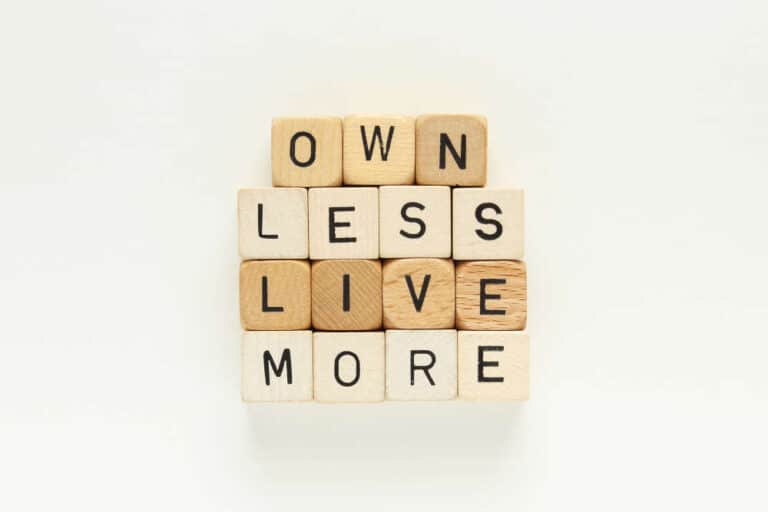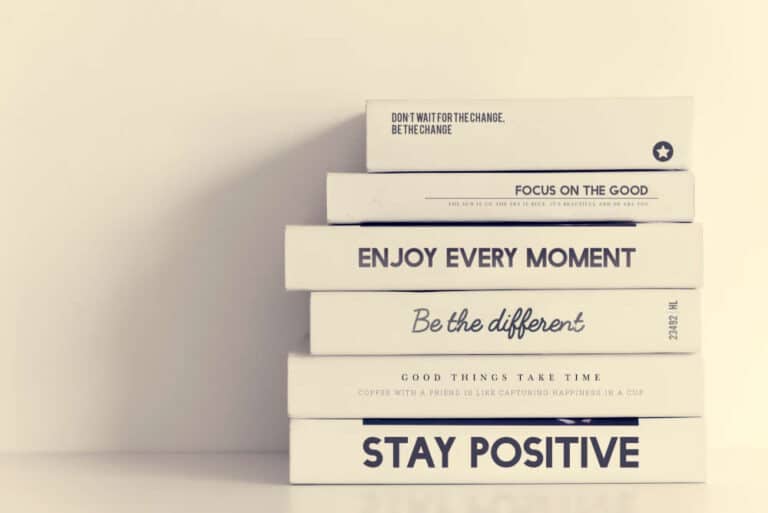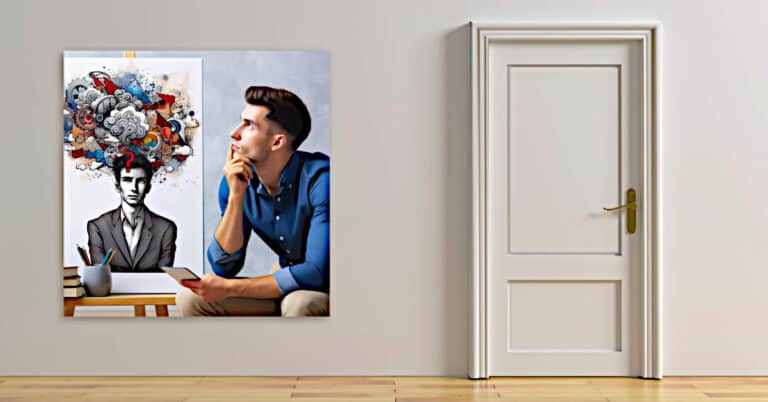The Problem with Minimalism: A Comprehensive Guide – 8 Clear Tips
Discover ‘The Problem with Minimalism’ in this comprehensive guide. Explore its pros, cons, and a balanced approach for a sustainable lifestyle. Learn more.

Minimalism has become an increasingly popular lifestyle trend in recent years. The basic idea is to strip your life down to the essentials—to own fewer material possessions and focus only on what you truly need.
Proponents claim that minimalism leads to more freedom, less stress, and greater happiness. However, many people are naturally resistant to paring down their belongings and living with less.
In this comprehensive guide, we’ll take an in-depth look at some of the main criticisms and potential downsides of minimalist living. Our goal is to provide a balanced, educational critique to help you determine if a minimalist philosophy is right for your own lifestyle.
What Exactly is Minimalism?
Before diving into the problems with minimalism, let’s briefly review what it means:
- Owning fewer possessions – Minimalists aim to reduce clutter and only own essential, useful items. The focus is on quality and multi-purpose belongings over quantity.
- Focusing on experiences – With fewer possessions to worry about, minimalists seek to spend more time on experiences, relationships, and personal growth.
- Living intentionally – Minimalists are selective and intentional about what they bring into their lives, from material goods to commitments.
- Financial benefits – With less “stuff,” minimalists often save money and spend less on housing, furniture, shopping, storage, and other expenses.
- Simplifying and decluttering – Minimalists regularly declutter their homes and pare down possessions to just essentials. The goal is simplicity and organization.
- Prioritizing time and freedom – Minimalists aim to minimize obligations so they have more free time for things they value. Fewer possessions can lead to greater portability and flexibility.
The degree of “minimalism” varies—from very strict (owning only 100 things) to more relaxed approaches focused on simplicity and intentionality. But in general, minimalism promotes living with less for greater freedom and fulfillment.
Now, let’s explore some of the biggest criticisms and concerns over minimalist living.
Problem #1: It’s Too Extreme and Restrictive
One of the most common criticisms of minimalism is that it’s too extreme and restrictive. The idea of limiting yourself to only 100 possessions or even just a few hundred can seem unreasonable or even impossible to many people.
Minimalist home and wardrobe sizes are often much smaller than “average.” And minimalists need to decline many gifts, purchases, and even free items that don’t align with their philosophy.
To some, this degree of restraint and limitation feels excessive—almost like a form of self-deprivation versus living abundantly. They argue that strictly limiting your possessions limits your choices and prevents you from fully enjoying life.
Counterpoint in Defense of Minimalism
Minimalists counter that they don’t feel deprived at all—in fact, quite the opposite. Here are some of their rebuttals:
- Minimalism isn’t about depriving yourself, but optimizing and intentionally choosing what adds value to your life. By removing excess stuff, you focus on what’s essential.
- Too many possessions can be burdensome—and people often derive more joy from experiences than material goods. Minimalism promotes what’s truly meaningful.
- You can still enjoy shopping, gifts, free samples etc. in moderation—you just need to be selective about acquiring more permanent possessions.
- There are varying degrees of minimalism—it’s not all-or-nothing. Find an approach that works for your needs and personality.
- The benefits of minimalism (simplicity, peace, portability, savings) outweigh the sacrifices of owning less.
Key Takeaway
Minimalist living may appear too extreme in theory, but followers argue it results in greater freedom and fulfillment. The degree of minimalism can be tailored to your needs.
Problem #2: Difficulty With Social Pressures Around Possessions
Another difficulty with minimalism is navigating the social pressures and norms around owning possessions.
For example, friends and family may have a hard time understanding your minimalist philosophy:
- Gift-giving occasions like birthdays and holidays can be awkward if you can’t accept or reciprocate most gifts.
- Declining heirlooms, baby hand-me-downs, or other offerings from loved ones might offend them.
- Owning a tiny home or wardrobe with very few clothes can seem odd and abnormal.
- Turning down free samples or giveaways may be seen as unnecessary self-denial.
- Not owning certain status symbols like cars or tech gadgets is uncommon.
- Others may consider your home barren, plain, or lacking creature comforts.
In a culture focused on materialism and consumption, it can be challenging to go against the grain. Your commitment to own less may be respected, misunderstood, or even judged by friends, family, coworkers, and society in general.
Navigating Social Dynamics as a Minimalist
While social pressures can make minimalism more difficult, there are ways to thoughtfully navigate relationships:
- Explain your motivations – Have open discussions about why minimalism appeals to you and the benefits it provides. Help others understand where you’re coming from.
- Suggest alternative gifts – For occasions like birthdays, gently guide people towards gift cards, donations to charity, handmade gifts, or experiential gifts rather than material possessions.
- Decline and donate tactfully – When declining excess possessions, politely explain that you’re committed to owning less. Then suggest donating unwanted gifts to those who would appreciate them.
- Focus on quality social time – Make more effort to enjoy shared experiences with friends/family that don’t involve consuming or acquiring possessions.
- Be a role model – Lead by example, focusing on non-material sources of meaning and fulfillment in life. Over time, your minimalist lifestyle may inspire others.
Key Takeaway
Minimalism goes against mainstream cultural norms, which can strain personal relationships. But with open communication, creativity, and leading by example, you can often smooth over tensions.
Problem #3: Perceived Deprivation of Joy, Comfort, and Options
There’s a common perception that by strictly limiting your possessions, minimalism forces you to deprive yourself of joy, comfort, and options in life. For example:
- Not owning a wide variety of clothing or shoes means you miss out on expressing yourself through fashion or always looking your best.
- Having minimal furniture, decorations, and “creature comforts” makes your home seem barren and uncomfortable rather than cozy.
- Getting rid of most of your kids’ toys or not buying them the latest gadgets feels like you’re limiting their fun and childhood joy.
- Avoiding time-saving tools and appliances forces you to work harder rather than smarter.
- Having few entertainment options (games, sports equipment, cable TV) at home results in more boredom.
- Not owning a car (or multiple vehicles) means missing out on convenient transportation and spontaneity.
In all aspects of life—from fashion to parenting to cooking to entertainment—minimalism seems to many people like an unnecessary self-imposed restriction that limits life’s joys and conveniences.
In Defense of Minimalist Living Standards
Minimalists don’t believe they are depriving themselves at all. Here are some of their arguments:
- You can still own carefully selected, high-quality multifunctional items that spark joy and serve your needs. Quality over quantity.
- Coziness and comfort stem more from mindset and relationships than possessions. Thoughtful minimal spaces feel peaceful.
- Kids derive more joy from experiences, activities, playtime with parents, and a few open-ended toys than an overload of plastic clutter.
- Prioritizing versatility, usefulness and efficiency allows you to work smarter rather than having single-use gadgets.
- Boredom stems from a lack of creativity rather than possessions. Minimalists find more fulfillment in activities like reading, writing, exercising, learning, and connecting with others.
- Carsharing, biking, and public transit provide adequate transport freedom for many minimalists without the burden of car ownership.
Key Takeaway
Minimalists focus on quality over quantity in meeting needs comfortably and sparking joy. Their lifestyle feels fulfilling rather than depriving.
Problem #4: Financial Savings May Be Overestimated
Another objection to minimalism is that its financial benefits may be overhyped. Advocates claim you’ll save money by owning almost nothing—but critics argue this isn’t necessarily true.
For example:
- Owning very few clothes and furnishings that are worn out frequently means replacing them more often. Buying extremely high-quality minimal wardrobes and furniture is costly upfront.
- Renting, leasing, or sharing certain belongings rather than owning them can become expensive in the long run compared to buying. Things like cars, apartments/houses, tools, electronics, or party supplies add up over time.
- Extreme decluttering before a move takes extensive time that could be spent earning income instead. Hiring professional organizers is very pricey.
- If you have kids, not providing a wide variety of toys, gadgets, clothes, and activities limits their development—and classes or summer camps for enrichment get very expensive.
- Constantly eating out because you own minimal kitchenware and appliances is likely more costly and less healthy than cooking at home.
In short, while minimalism saves money in some areas, the trade-offs may mean you spend more in other categories—making it harder to benefit financially.
Evaluating the Financial Impact Thoughtfully
Like any major lifestyle change, adopting minimalism requires factoring both costs and savings realistically:
- Track your spending in detail before and after becoming a minimalist. Don’t just speculate—look at the numbers.
- Weigh the long-term costs vs. benefits of owning vs. borrowing, sharing or renting possessions. The upfront savings of minimalism may disguise higher costs long-term in some cases.
- Compare the time spent decluttering and organizing vs. the potential income from working those hours instead. Factor in the financial value of your time.
- If you have kids, look closely at where you may need to spend more on classes, activities and services to meet their developmental needs with fewer possessions.
- Balance more frequent replacement costs with the benefits of higher-quality multipurpose possessions that better meet your needs.
In the end, minimalism’s financial impact depends greatly on your individual circumstances. Crunching the numbers thoughtfully avoids exaggerating potential savings.
Key Takeaway
While minimalism reduces spending in some areas, the trade-offs may increase costs elsewhere. Look closely at your full financial picture.
Problem #5: Perfectionism and Judgment Around “Enough”
Some critics also argue that minimalism encourages perfectionism and judgment about what is “enough.” The never-ending quest to own less can become demanding and obsessive.
For instance:
- Debating endlessly over each possession and purchase decision takes extensive mental energy. Minimalists constantly re-evaluate what is essential or just clutters their space and mind.
- Comparing yourself to others with even fewer possessions breeds jealousy and discontentment rather than fulfillment.
- Even after multiple decluttering rounds, you may continually feel you own more than you need—that you should slash items even further.
- Judging others for owning “too much stuff” appears self-righteous, when reasonable needs and preferences differ.
- Feeling guilty and torn whenever you acquire new possessions or have difficulty discarding gifts from loved ones.
Overall, minimalism seems to promote unhealthy perfectionism for some—a sense that you’ve never minimized enough and need to keep culling possessions aggressively.
Maintaining Balance as a Minimalist
To avoid obsessive minimalism, it’s important to:
- Declutter gradually and thoughtfully—not through rapid, large-scale purging that leaves you without needed items.
- Remind yourself frequently that minimalism is about intentionality and fulfillment—not a number.
- Recognize that needs and lifestyles differ. Don’t judge others’ belonging quantities.
- Focus more on using and appreciating the possessions you choose to retain rather than continually culling.
- Allow yourself grace through occasional gifts, shopping excursions or freebies. Rigidity causes distress.
- Pause decluttering if it ever feels compulsive or stops sparkling joy. Resume later in a healthy mindset.
The goal of minimalism is to simplify life—not overcomplicate it with obsessive purging and comparison. Be gradual and kind to yourself in the process.
Key Takeaway
To avoid perfectionism about owning less, focus on intentional appreciation of belongings over aggressive decluttering. Minimalism requires self-compassion.
Problem #6: Potentially Problematic for Some Personality Types
Another argument against minimalist living is that it can be problematic for certain personality types who value material possessions.
For example, minimalism may be challenging for:
- Sentimental people – Those who form emotional connections to belongings and have difficulty parting with gifts, heirlooms, childhood mementos, etc.
- Crafters/artists/makers – People who own substantial supplies, tools, and materials to support their hobbies. Limited storage causes distress.
- Collectors – Individuals who enjoy collecting specific items like books, records, figurines, or stamps provide pleasure and a sense of identity.
- Visual learners – People who retain information better when they can see and interact with tangible objects struggle when those learning tools are discarded.
- Hands-on learners – Those who pick up new skills more easily with the help of devices, tools, instruments struggle with minimal options.
- Traditional homemakers – Individuals who derive joy from creating a warm, welcoming home environment dislike owning only minimal furnishings.
- Fashion lovers – People who use clothing as a form of self-expression and social signaling are limited by a minimal wardrobe.
In short, minimalism requires sacrificing belongings that provide substantial joy, security, self-identity, and functionality for some personality types.
Tips for Adapting Minimalism To Your Needs
No approach will work perfectly for everyone. Here are some tips for making minimalism work better for you:
- Identify your non-negotiable possessions that spark joy or serve your needs. Keep only these core items.
- Allow yourself exceptions in one or two categories based on your interests/passions. For example, keep more craft supplies.
- Get creative with multi-purpose furniture and clothing to maximize usefulness in a small space.
- Rent or borrow some items infrequently rather than eliminating beloved collections entirely.
- If you struggle with visual or hands-on learning, look for online tools, apps and resources to supplement physical materials.
- Focus on owning functional items you use regularly rather than items kept solely for appearance.
The key is adapting principles of simplicity and intentionality in a way that aligns with your lifestyle and personality. You don’t have to conform to someone else’s version of minimalism.
Key Takeaway
For those who form strong attachments to possessions or use them as creative tools, strict minimalism requires sacrificing meaning. But the philosophy can be customized.
Problem #7: Potentially More Wastefulness
Some environmentalists argue that rapidly discarding functional possessions in pursuit of minimalism is actually wasteful. Here’s why:
- Tossing out moderate clutter contributes substantially to landfill waste versus donating gently used items.
- Replacing multi-purpose household goods with new specialized minimalist tools uses more resources overall.
- Continually buying higher-quality replacement pieces that wear out quickly has a larger footprint than goods that last.
- Dramatically downsizing to a tiny home often means disposing of and replacing perfectly useable furniture and appliances.
- Marie Kondo’s advice to thank then discard items sparks joyless purging that fills landfills with functional goods.
- Pressure towards the 100-item lifestyle leads to removing belongings that could serve someone.
In general, extreme minimalism focuses on convenience and simplicity over sustainability. Quick purging marries poorly with environmentalism.
Balancing Minimalism With Eco-Friendly Lifestyle
You can absolutely practice eco-friendly minimalism with some adjustments:
- Declutter slowly and thoughtfully. Donate useable goods rather than trashing them.
- When replacing belongings, buy secondhand first and opt for durability. Repair items when possible.
- Before buying specialized minimalist tools, look for multifunctional items you already own.
- Share infrequently used items like cars and lawnmowers with family or neighbors rather than discarding.
- Compost food scraps and recycling waste rather than having excess hauled to landfills.
- Focus more on owning reusable, eco-friendly products rather than disposable convenience items.
With some adaptation, you can certainly pursue minimalism in a more sustainable way. The key is being intentional by making green-friendly choices about what you acquire, keep, and discard.
Key Takeaway
Thoughtlessly discarding useful possessions contradicts sustainability. But with some adjustments, eco-friendly minimalism is possible.
Problem #8: Health Risks of Decluttering and Downsizing
In the process of minimizing possessions, some potential health risks also arise. For example:
- Aggressive decluttering and reorganizing can exacerbate respiratory issues and allergies due to dust and mold spores released from possessions.
- Lifting and carrying boxes during downsizing can lead to muscle strains and back injuries without proper precautions.
- The mental labor and stress of decision fatigue from continually evaluating possessions may contribute to anxiety, sleep loss, and burnout.
- Severely limiting sentimental items like photos albums and childhood mementos can negatively impact mood and emotional health for some personality types.
- Radically switching residence types (like moving from a large house to a tiny home) causes substantial life adjustment stress.
- Removing items like hobby supplies and musical instruments limits recreation outlets that lower stress.
- Pressure towards extreme minimalism can negatively impact self-image. Not meeting unrealistic expectations breeds shame and self-criticism.
Practicing Minimalism In a Healthy Way
To minimize risks as you declutter and downsize, make sure to:
- Declutter in multiple small sessions rather than marathon purging sessions to avoid mental and physical burnout. Take frequent breaks.
- Wear a mask when handling dusty possessions or moldy belongings. Disinfect surfaces after cleaning out cluttered areas.
- Use proper lifting techniques and get help moving large/heavy possessions to avoid injury.
- Retain enough sentimental possessions to support your emotional health. Don’t force yourself to discard items that bring comfort or joy.
- Allow yourself to keep hobby and recreational items that lower your stress levels.
- Make lifestyle transitions gradually over time rather than drastically (like downsizing homes or wardrobes all at once).
- Avoid unhealthy comparisons with others; focus on your own needs and process.
- Remind yourself that minimalism requires ongoing effort—it’s never complete. Expect bumps along the way.
The path towards owning less should energize and fulfill you. By adopting changes thoughtfully, you can minimize risks of burnout, injury, or emotional distress.
Key Takeaway – The Problem with Minimalism
Pursuing minimalism requires balancing excellent physical and mental health habits. Declutter and downsize at a gradual, moderate pace.
Frequently Asked Questions About Minimalism
To recap some of the most common questions about the minimalist lifestyle, here is an FAQ section:
Isn’t minimalism just deprivation and self-denial?
Minimalism is not inherently about depriving yourself – it simply involves being intentional about what you choose to own and making room for more meaningful experiences. The focus is on optimizing for fulfillment rather than denying yourself joy.
Don’t you get bored with so few entertainment options and possessions?
Boredom stems more from a lack of creativity rather than a lack of stuff. Minimalists devote more time to activities like reading, writing, learning, exercising, and connecting with others in meaningful ways.
Isn’t it unhealthy for kids to have so few toys and activities?
Kids get more joy from active parent engagement, open-ended play, and imagination than an overload of toys. Some enrichment classes can supplement minimalist play. The key is balancing socialization and development.
How do you deal with gifts and social pressure around possessions?
Explain your motivations openly, emphasize shared experiences, suggest charity donations, and lead by example. With communication and creativity, you can often smooth over gift-giving challenges.
Doesn’t minimalism get expensive with frequent replacement costs?
Look closely at long-term costs in all spending categories, not just initial savings. Weigh benefits vs. trade-offs of owning vs. borrowing or replacing items. The financial impact depends on your circumstances.
What if minimalism feels obsessive or causes decluttering burnout?
Take breaks as needed, declutter gradually, and focus more on using and appreciating belongings over continuously purging items. Remind yourself that minimalism is about intentionality, not a number achieved.
How can sentimental people adapt minimalism to avoid anguish?
Identify your few non-negotiable items first. Allow exceptions for your most cherished possessions. Supplement physical mementos with digital scans. Rent storage if needed during transitions. Minimalism requires customization.
Isn’t minimalism wasteful when you purge functional stuff? How can it be eco-friendly?
Donate useable items when possible. Upgrade slowly and opt for durability and multiuse. Share infrequently used tools. Compost and recycle waste. When mindful, minimalism can align well with environmentalism.
What are the main benefits of minimalism?
The Problem with Minimalism was our question, so now what? Reduced stress, greater focus on priorities, financial savings, time savings from decluttering, improved organization, more freedom and mobility, ability to live portably, closer relationships as you value experiences over things.
Key Takeaways: Evaluating If Minimalism Is Right For You
There are certainly some valid criticisms of the minimalist lifestyle philosophy and potential disadvantages depending on your circumstances. However, many of these can be addressed or avoided with the right approach:
• Adapt minimalism to your needs – Find the right balance for your personality, interests, and responsibilities. Minimalism isn’t all-or-nothing.
• Focus on quality over quantity – Carefully chosen multifunctional items spark joy. Experiences and relationships provide meaning beyond possessions.
• Maintain physical and mental health – Declutter gradually. Retain emotional comfort objects. Embrace progress over perfection.
• Practice eco-friendly minimalism – Donate usable goods, borrow infrequently needed items, repair when possible, and discard mindfully.
• Weigh total financial impact – Look beyond upfront savings at potential long-term trade-offs in spending categories.
• Customize minimalism to your family – Respect different needs and attachment styles among family members. Compromise thoughtfully.
• Lead by example – Explain your minimalist motivations openly but non-judgmentally. Emphasize shared experiences.
• Remind yourself: it’s about intentionality, not deprivation – Minimalism aims to optimize joy, fulfillment and meaning…not impose arbitrary restrictions.
If you approach minimalism in a balanced, intentional way that works for your unique personality and circumstances, it can be deeply rewarding. Focus on fulfilling experiences over possessions.
At the same time, minimalism is not a panacea or quick fix for finding meaning. Consider if its benefits would outweigh the sacrifices and thoughtful adaptations required for your situation and family.
Ultimately, choose the lifestyle and consumption philosophy that aligns with your values and sparks the most joy and purpose. An all-or-nothing maximalist or minimalist approach is not required. Find the thoughtful balance that helps you live intentionally.






